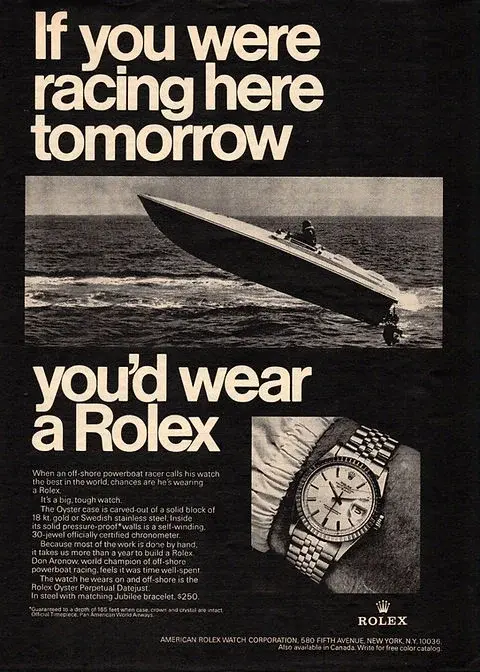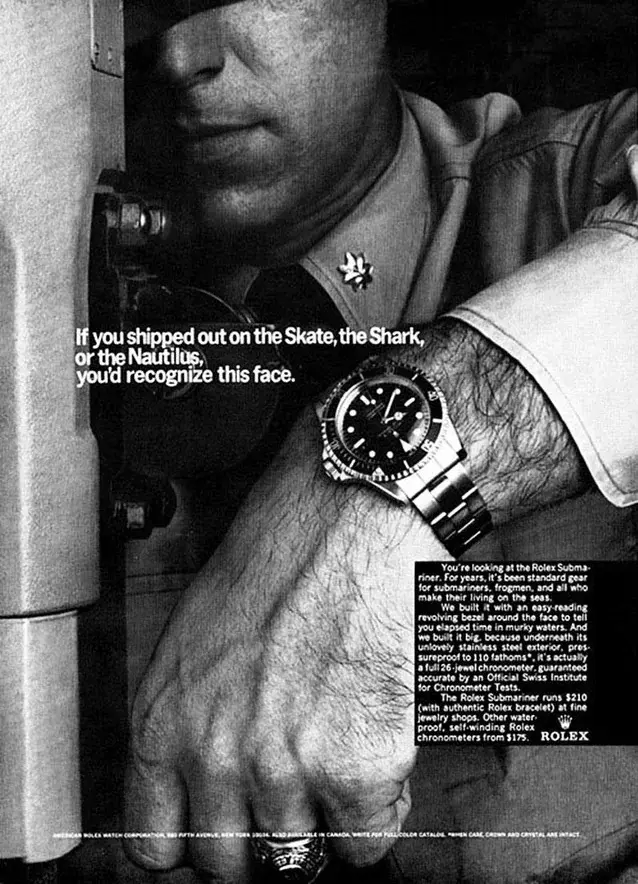iosist
·I think it's much more interesting to confine the comparison to the mid-century vintage era. It's basically self-evident that Omega completely fell apart in the 70s whereas Rolex was able to chart a successful path forward, whatever one thinks of it. But in the 50s and 60s, Omega and Rolex were much more evenly matched. The Anton Kreuzer book has this interesting passage about their closely competitive numbers in chronometer certificates in this period.
So with these vintage watches, I think preference is driven much more by differentiation in brand marketing image. Like take these two ads from the late 60's which are doing basically the exact same thing in different ways.
People often repeat the idea that old Rolex was a down-to-earth, rugged, toolwatch company. But I don't think that's really it. Both ads here are relying on essentially the same aspirational luxury lifestyle marketing approach. To me the real difference is that Rolex embraces the aesthetics and language of modern, mass industrial society whereas Omega positions itself as inheritor and champion of a more romantic, classical tradition of horology. Obviously both are Swiss but it feels not dissimilar to differences in European and American tastes. Personally, the Rolex approach feels almost vulgar in comparison to Omega's refinement, but I can also see how others view this as cutting edge and radical against Omega's comparatively stodgy traditionalism. But I think that basic dichotomy can be seen all over, for instance in the difference between Rolex's descriptive names (DateJust, Submariner) and Omega's evocative ones (Constellation, Seamaster).
*Editing to note that I just realized that the Omega ad is from 1955 and the Rolex ad is I think from the mid 60s so it is not an entirely fair comparison. But I think the overall assessment still holds.
So with these vintage watches, I think preference is driven much more by differentiation in brand marketing image. Like take these two ads from the late 60's which are doing basically the exact same thing in different ways.
People often repeat the idea that old Rolex was a down-to-earth, rugged, toolwatch company. But I don't think that's really it. Both ads here are relying on essentially the same aspirational luxury lifestyle marketing approach. To me the real difference is that Rolex embraces the aesthetics and language of modern, mass industrial society whereas Omega positions itself as inheritor and champion of a more romantic, classical tradition of horology. Obviously both are Swiss but it feels not dissimilar to differences in European and American tastes. Personally, the Rolex approach feels almost vulgar in comparison to Omega's refinement, but I can also see how others view this as cutting edge and radical against Omega's comparatively stodgy traditionalism. But I think that basic dichotomy can be seen all over, for instance in the difference between Rolex's descriptive names (DateJust, Submariner) and Omega's evocative ones (Constellation, Seamaster).
*Editing to note that I just realized that the Omega ad is from 1955 and the Rolex ad is I think from the mid 60s so it is not an entirely fair comparison. But I think the overall assessment still holds.



